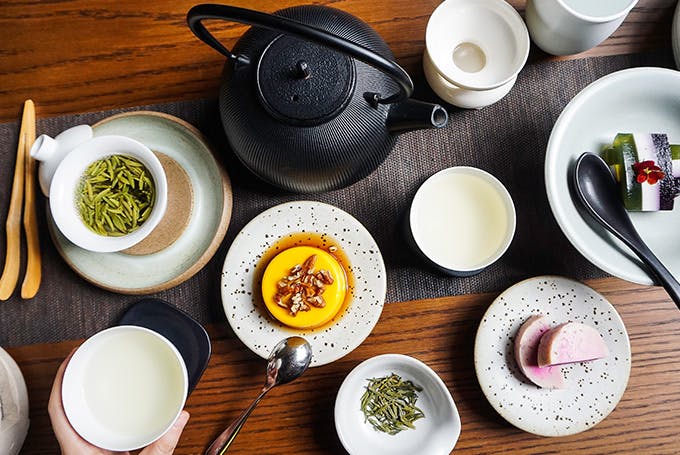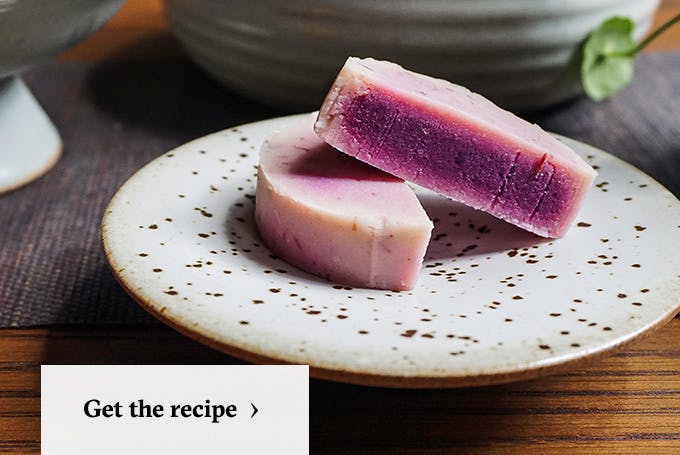How To Throw A Chinese Tea Party
Learn how to throw a traditional Chinese tea party
Located in the heart of China's Sichuan region, Chengdu is a bustling city known for dishes laced with numbing Sichuan peppercorns, like spicy hot pots. Juxtaposed with this love of spice is an equally prominent culture around the art of delicate teas.
Teahouses and ceremonies have become an integral part of the Chinese lifestyle over centuries, serving as a location to congregate and share ideas. The Mi Xun Teahouse at The Temple House in Chengdu is the embodiment of this Sichuan culture. Built during the Qing dynasty, the ancient temple allows visitors to partake in a daily traditional tea ceremony—an opportunity not to be missed. Before your next trip east, there are a few things to learn about the art of the Chinese tea party.
Know your teas. The tea spectrum is wide, ranging from white (the least-processed tea made from unopened plant buds) to yellow (similar to green tea but with a slower drying process) to tisanes (not actually tea leaves, these are made of herbs and flowers). Within this assortment are three types in particular you need to know: green, oolong (also known locally as blue tea) and black.
Green tea is the oldest and most popular in China, made from drying new shoots of the plant. Oolong, on the other hand, is lightly fermented and can vary greatly in flavor based on type, from light and fruity to rich and woody. Black tea is the second-largest variety, also made from the new shoots of tea leaves, except these are wilted, fermented and dried.

Snack attack. The most common snack to enjoy with a cup of tea in Chengdu is peanuts. Teahouses typically have overflowing bowls on every table for families to enjoy as they sip and talk. To match the elevated teas from around China and Taiwan, vegetarian bites, an homage to the Buddhist temple next door, line Mi Xun's menu; these include ice grass, fresh bamboo shoots and Chinese gourd.
Savory snacks aside, it's the desserts that really take center stage—like the purple sweet potato Chinese tea cake (see the recipe). Not really "cake" at all, this steamed sweet potato and cranberry treat is the delicate and spongy snack you won't be able to put down.
Prime time. Now that we have the food covered, let's talk about the main event: tea. While you can choose any pot of tea from a "tea bible" featuring more than 50 options, the Bamboo Green variety, known as Zhu Ye Qing, is the front-runner.
This award-winning tea, native to the Sichuan region, is known throughout the country for its high quality. Incredibly delicate with only a hint of color but a hard punch of earthy flavor, it can be found only on Mount Emei, where the leaves grow at an altitude of 10,000 feet.
The most important part when brewing a tea like this is to properly prime your drinking vessel with hot water to ensure the liquid gets to the right temperature. Here, the green tea is submerged in 195-degree water for only 10 seconds before being strained and poured into a primed teacup.

Compared to most consumer tea bags that get steeped for three to four minutes, the brew process is quick but powerful. The leaves can even be reused (see the slideshow to walk you through each step).
While it's impossible to recreate at home the experience of partaking in such a revered Chinese tradition, with a trip to the right tea shop and these tips, you'll certainly be on your way—imaginary friends and stuffed animals not included.
The first step is to prime all of the teacups with hot water to keep the tea hot once poured.
This is Zhu Ye Qing tea, also known as bamboo green tea, from Mount Emei in China.
When brewing green tea, bring the water to a boil and then let cool to 195º before pouring.
A ceramic cup is used to remove any bubbles from the surface of the tea.
The tea is strained through a fine-mesh sieve into a small ceramic carafe.
The green tea is first poured into smaller teacups, though you do not drink out of these.
Larger teacups are placed over the small ones and inverted to transfer the tea cleanly. You then present the empty teacup to smell the aroma can be enjoyed.
You're all set to have a lovely and proper tea party.
Photos: Courtesy of Jake Cohen









